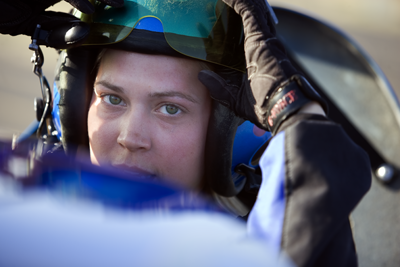The World Aerobatic Championships are held every two years and bring together the best aerobatic pilots in the world. The Championships last 10 days as pilots battle it out for the top titles in air sport. Silverstone Circuit in Britain will host the 25th FAI World Aerobatic Championship in 2009
The Championships include two separate competitions, the Technical Championship and the Freestyle Championship.
Technical Championship
The first is called the 'Technical' contest and involves flying a series of aerobatic figures as accurately as possible, the emphasis is on precision and to win this contest a pilot has to fly very complex aerobatic manoeuvres better than any of the other pilots. There are up to four 'rounds' in this contest, so most pilots will fly four aerobatic sequences during the contest. In each sequence the individual figures flown are geometrically defined and drawn from the internationally agreed Aresti Catalogue system.
Qualification Round: Known Programme
All pilots fly the same sequence and will have practiced flying the sequence before the contest. Pilots have to fly the sequence of figures accurately, in the correct order, in the specified direction, in a small area of sky and without stopping! A safe flight in this round qualifies the pilot to participate in the remainder of the competition, but this round does not count towards the final result. The World Championship is a very difficult contest, so pilots have to prove that they are good enough to fly in the contest!
Round 1: Free Programme
In the 'Free' programme each pilot flies a sequence that (s)he has composed him/herself. The manoeuvres flown must demonstrate a high level of technical difficulty and a wide variety of flying techniques. The Free programmes are designed by each pilot to suite his/her own preferences and the capabilities of their specific aircraft type.
Round 2 and 3: Unknown Programmes
Each pilot will then fly two 'Unknown' sequences. These 'unknowns' are composed from figures submitted by the competing countries and are flown without practice. Each nation will try to fox the others' pilots by choosing figures difficult to fly well at the first attempt. The Unknowns are a severe test of pilot skill and the Championship can easily be lost if a pilot executes just one figure incorrectly.
The two 'Unknown' sequences, revealed to contestants only when the previous sequences have been completed, will often be very complex and each pilot's ability to execute these requirements without practice will determine how well (s)he scores.
At every contest, pilots can be observed with hands in the air, walking backwards, or holding an imaginary stick, studying a piece of paper and making sudden turns reminiscent of a ballet dancer. This is known as 'walking the sequence' and is a vital part of the pre-flight mental rehearsal they must make if they are to succeed.
Pilots can win individual medals, or team medals. Countries need three pilots in the competition to be counted towards the team results. Aerobatics is unusual in the world of sport, because men and women compete equally in the battle to win the world title the overall winner of the Technical Championship is called the World Aerobatic Champion, a title that could be won by a man or a woman.
The Freestyle Championship
This flight is much more like airshow flying each flight is very different and flown with smoke and music. The pilots invent their own display sequences that last between 3½ and 4 minutes, using any combination of manoeuvres - anything goes! The only limit is the pilot's skill and imagination. Each performance is judged for technical and artistic merit.
It is a tremendously exciting programme to watch, with aircraft gyrating and tumbling in ways that seem quite impossible to the spectator.
Subscribe to:
Post Comments (Atom)




yay melissa!!! good luck, lady! love you and sending good energy your way... you rock!!!!!!
ReplyDeletekatie